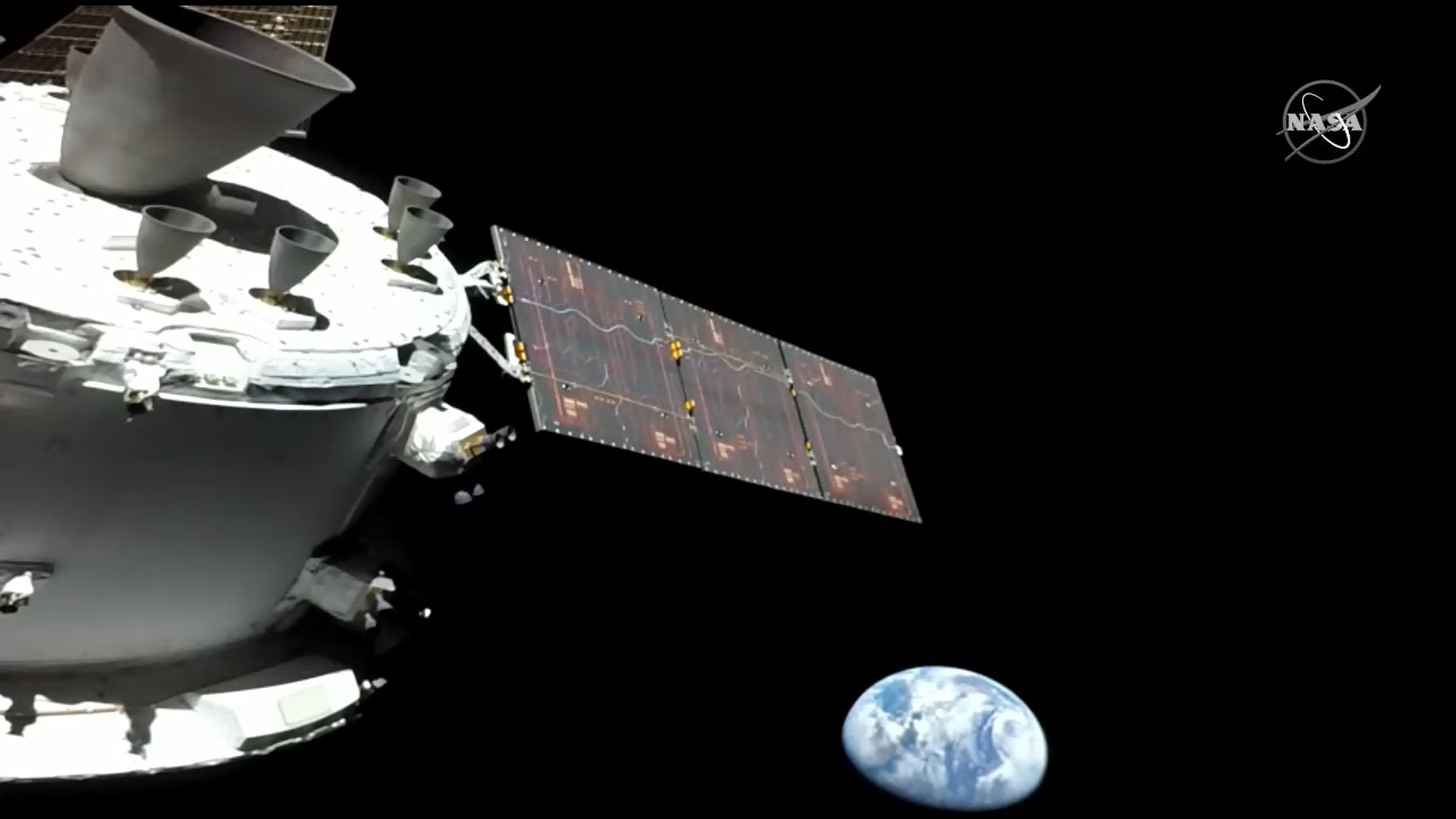Spot NASA's Artemis 1 Orion on its way to the moon in a free livestream (Nov. 19)
The live Artemis 1 Orion telescope webcast will begin at 10:30 p.m. EST (0330 Nov. 20 GMT).
Editor's note: This story was updated on Nov. 18 after the event was rescheduled due to poor weather at the telescope site.
NASA's Artemis 1 Orion spacecraft is headed to the moon on a first-of-its-kind test flight and you may be able to see a telescope's view of the spacecraft online Saturday night (Nov. 19).
The Orion spacecraft launched toward the moon Wednesday (Nov. 16) at 1:47 a.m. EST (0647 GMT) from NASA's Kennedy Space Center in Florida, riding the agency's first Space Launch System megarocket into orbit. A few hours later, the rocket's upper stage fired its engine to send the Artemis 1 Orion capsule on its trip around the moon. That's where tonight's live webcast comes in.
Astrophysicist Gianluca Masi of the Virtual Telescope Project in Ceccano, Italy, will attempt to stream live telescope views of Orion online in a livestream event scheduled for 10:30 p.m. EST (0330 Nov. 20 GMT). You can watch it free in the window above or directly from the Virtual Telescope Project website.
Artemis 1 launch photos: Amazing views of NASA's moon rocket debut
Live updates: NASA's Artemis 1 moon mission

"The launch of Artemis 1 is much more than us going to the moon again. It is the beginning of a new era," Masi wrote in a statement. "Because of the historic importance of this event, we decided to try something never done (to our knowledge) before: we will share live images, online, of the Orion spacecraft on its way to the moon after its launch."
It is not certain that the Virtual Telescope Project will be able to spot the Orion spacecraft. First, the weather in Italy must cooperate, then Masi must be able to spot the spacecraft, which is a relatively small, fast-moving target in the void of space, with his telescope.
"We will do our best to show you the Artemis 1 Orion spacecraft on its way to the moon, as soon as it will be visible from Italy," Masi wrote. "We will assume the launch and trajectory data provided by the JPL Horizons / Solar System Dynamics services, properly imported in our robotic telescopes to track this extremely demanding target at our best."
Get the Space.com Newsletter
Breaking space news, the latest updates on rocket launches, skywatching events and more!
Email Tariq Malik at tmalik@space.com or follow him @tariqjmalik. Follow us @Spacedotcom, Facebook and Instagram.
Join our Space Forums to keep talking space on the latest missions, night sky and more! And if you have a news tip, correction or comment, let us know at: community@space.com.

Tariq is the Editor-in-Chief of Space.com and joined the team in 2001, first as an intern and staff writer, and later as an editor. He covers human spaceflight, exploration and space science, as well as skywatching and entertainment. He became Space.com's Managing Editor in 2009 and Editor-in-Chief in 2019. Before joining Space.com, Tariq was a staff reporter for The Los Angeles Times covering education and city beats in La Habra, Fullerton and Huntington Beach. In October 2022, Tariq received the Harry Kolcum Award for excellence in space reporting from the National Space Club Florida Committee. He is also an Eagle Scout (yes, he has the Space Exploration merit badge) and went to Space Camp four times as a kid and a fifth time as an adult. He has journalism degrees from the University of Southern California and New York University. You can find Tariq at Space.com and as the co-host to the This Week In Space podcast with space historian Rod Pyle on the TWiT network. To see his latest project, you can follow Tariq on Twitter @tariqjmalik.









